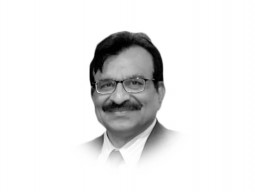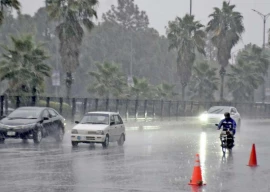
Islamabad Policy Research Institute (IPRI) conducted their annual Margalla Dialogue-2021 on 13-14 December in Islamabad. Prime Minister Imran Khan spoke at the opening session. The well-structured discourse had CEOs, Commanders, Diplomats and Scholars’ Forums. The Commanders’ Forum focused on the future of warfare; with most iterations an academic exercise to fathom the form, format and complexities of future warfare. This piece would put across the Forum’s essential take on the subject, with some observations.
Literature on contemporary warfare is awash with terminologies like Hybrid, 7th Generation, Digital, Asymmetric, Manoeuvre, Network Centric and Cyber Warfare etc besides Revolution in Military Affairs (RMA) incorporating System of Systems and Internet of Things etc. Nano-technologies, Quantum Computing, 5G Warfare, Geo-Technology, Information Control and Dominance, Robotics, Big Data Analytics, Kinetic and Non-Kinetic Force Application and Artificial Intelligence (AI) were put across by speakers as ‘some’ features of the evolution of warfare, as we see it. Today the raging debate tries to ascertain whether warfare is concept-driven or technology-driven or both. There is, however, broad consensus that technology has permeated all facets of warfare.
In my early research on Military Decision-Making Process (MDMP) and Operational Art/Analysis (OA), one was amazed as to how advanced militaries like the US were trying to quantify non-tangible aspects like ‘motivation’, ‘will to fight’ etc to templates; ascribing these attributes a numerical value to compare the opposing sides’ combat power potential/ratio (CPR). These militaries since long use ‘CPR Calculator’ to compare quantifiable (number of troops, guns, aircraft, ships, logistic stamina etc) and non-quantifiable aspects (motivation, sacrifice, training, cultural and societal differentials etc) of opposing sides. Leaders’ propensities and predilections are also subjected to complex socio-political tools for a desired outcome/policy formulation and decision. Game Theory is run over and over in complex computer simulations.
In warfare’s modern automation under an AI-driven machine learning environment, replacement of human operators by machines is considered to have unintended consequences, as identified in my piece “The future of warfare and Artificial Intelligence” published in this space on 4 June 2020.
In addition to the above ‘intimidating’ array of warfare-related evolution of technologies, developments like the emergence of armed drone or UAVs (Unmanned Aerial Vehicles) — made affordable by technology proliferation — is also altering the character of warfare. Kamikaze drones in swarms were used effectively to impose a decision by Azerbaijan in their conflict with Armenia in 2020.
Diminishing costs, availability of technology and reach of the non-state actors in addition to the conduct of warfare over the ‘entire’ electro-magnetic spectrum are profoundly affecting the theory and practice of conflict at limited scale, and warfare at larger scale.
Some theorists strongly feel that technology alone cannot win wars as war still remains a dialectic between the ‘opposing wills’; that a lot in war depends on the ‘fog of war’, the ‘chance’ and the ‘luck’. Napoleon (1769-1821) is famously quoted as asking for ‘lucky generals’ above everything else.
Practitioners and thinkers also worry about the ‘dehumanisation’ of warfare, employing several or all means. That warfare is no longer the ‘continuation of policy by other means’, as Clausewitz (1780-1831) famously said. They opine that ‘policy today instead is continuation of warfare by other means’.
From the above theoretical framework, following ‘stray thoughts’ can be discerned:
One, like always, warfare is an indispensable human activity, as conflict is natural to being human. Warfare today and tomorrow is likely to be low-scaled involving a vast array of forms and formats like trade war, intellectual property warfare, space warfare, war for global commons, cold war, psychological warfare, perception management warfare with propaganda warfare as its tool, and social media and internet warfare. If the scale is likely to be low-intensity, the scope is not going to be limited, as modern wars are likely to affect the entire spectrum of population, civilian and military alike; just like the ‘total warfare’ of the yester years, yet remaining well below the violence level of total warfare. We are going to see phasing out of concepts like limited warfare, bi-tri-service warfare, localised warfare and all-out warfare. The next point would be further elucidating this argument.
Two, ubiquitous permeation of social media and technology today make it hard for top-tier civil and military leadership in any country to remain insulated from the effects of even small-scale military incidents. The traditional hierarchy of sub-tactical, tactical, operational and strategic levels of military engagements is becoming obsolete. Leaders at the top levels are drawn into incidents way below their level of attention and scope, thanks to the media generated hype. Balakot incident between India and Pakistan (2020) is a case in point.
Three, the cited reasons call for serious thinking about keeping large conventional forces with heavy weaponry. The globalised world today restrains the use of excessive force. The US suffered a defeat in Afghanistan not because of lack of forces and/or weaponry. It was because of the curbs they were forced to comply with, regarding unrestrained usage of force, if and when they did.
Four, the traditional construct of militaries is now upside down. In the traditional construct, the pyramid had tactical/sub-tactical levels at the base (largest) with operational level in the middle and strategic/geo-strategic levels on top of the pyramid (smallest); with each level consuming resources commensurate to its size. In the changed construct, forces — usually the weaker side — allocate largest resources to the strategic/geo-strategic levels (geostrategic posturing, diplomacy, media/perception manipulation and narrative formation etc), with tactical/sub-tactical levels only resourced through an inexpensive militant act like an ambush, an IED etc. Such small-scale acts rattle the strategic/geo-strategic levels of the opponent. So, the modern military construct is now an inverted pyramid.
Five, Clausewitz correctly thought the ‘character’ of war changes, not its ‘nature’. Although weaponised AI and other newer technologies will bring changes to the force organisation, employment doctrines and ‘some’ redundancy in human involvement; warfare would continue to be a human activity, despite the tempting transformative potential of technology. A multimode analysis by Stephen Biddle in his 2006 book, Military Power: Explaining Victory and Defeat in Modern Battle, shows that out of 16 wars between 1956 and 1992, technologically superior side won only eight times.
We must remain alive to the changing character of modern conflict to be able to fight the future conflict under its newer dictates. Meanwhile, the game is on.
Published in The Express Tribune, December 23rd, 2021.
Like Opinion & Editorial on Facebook, follow @ETOpEd on Twitter to receive all updates on all our daily pieces.
COMMENTS (3)
Comments are moderated and generally will be posted if they are on-topic and not abusive.
For more information, please see our Comments FAQ










1721116817-0/2668677-bannuattack-1721116568-295-640x480-(1)1721116817-0-270x192.webp)



Excellently put across and your stray thoughts are so very much relevant..
Why we can not live in peace Do Kashmiris really want us to liberate them
Too bad with the world s most advanced technologies and capital resources the US still could not defeat the Taliban or Vietnamese. That tell us that one could kill lots of people with advances in warfare but still can t subdue to submission the will of a nation to survive.